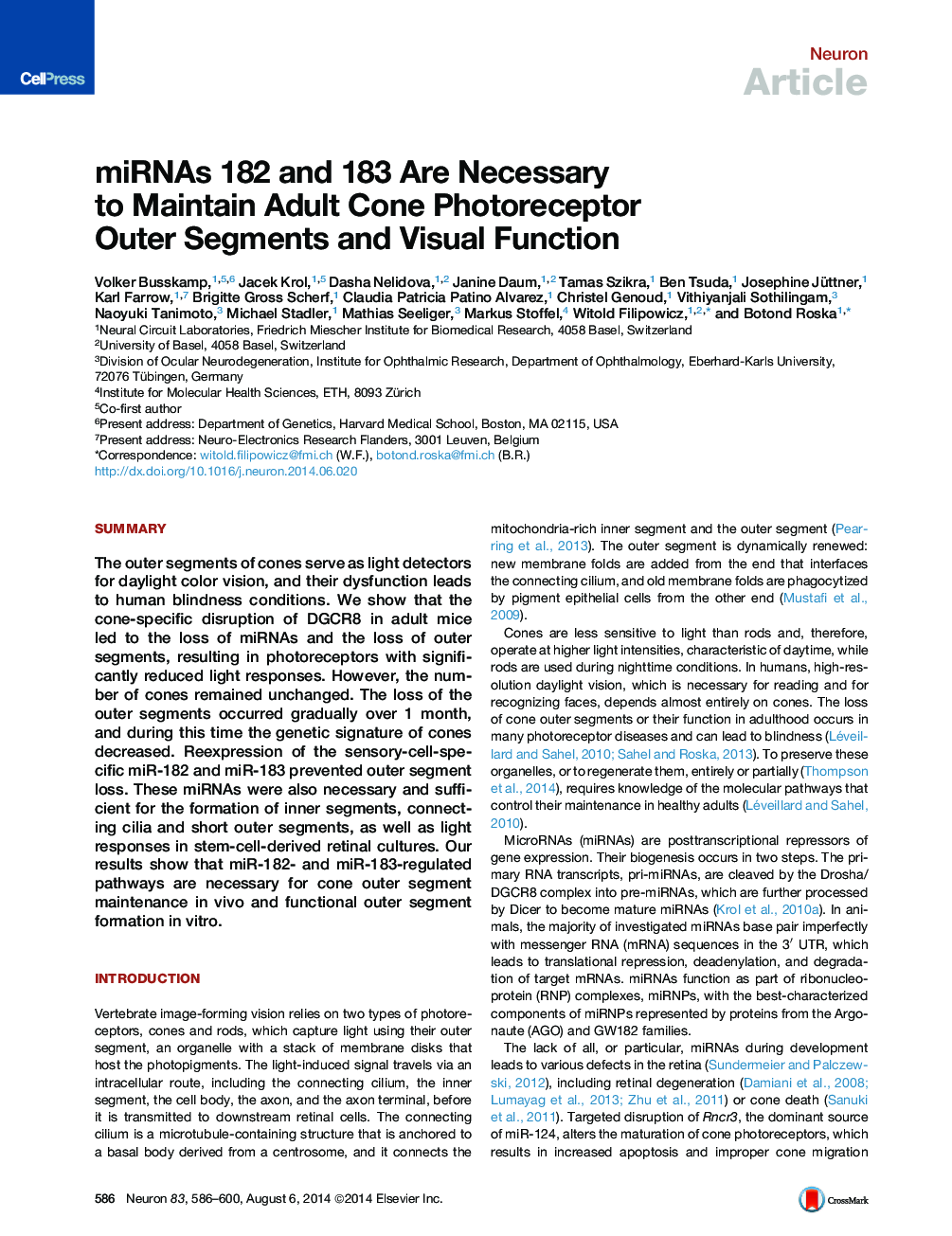| Article ID | Journal | Published Year | Pages | File Type |
|---|---|---|---|---|
| 4320954 | Neuron | 2014 | 15 Pages |
•miRNA depletion in adult cones leads to the loss of outer segments and cone vision•miR-182 and miR-183 are sufficient to preserve cone outer segments•The loss of miRNAs leads to a decrease in the genetic identity of cones•miR-183/96/182 induce outer segments and light responses in stem-cell-derived retinas
SummaryThe outer segments of cones serve as light detectors for daylight color vision, and their dysfunction leads to human blindness conditions. We show that the cone-specific disruption of DGCR8 in adult mice led to the loss of miRNAs and the loss of outer segments, resulting in photoreceptors with significantly reduced light responses. However, the number of cones remained unchanged. The loss of the outer segments occurred gradually over 1 month, and during this time the genetic signature of cones decreased. Reexpression of the sensory-cell-specific miR-182 and miR-183 prevented outer segment loss. These miRNAs were also necessary and sufficient for the formation of inner segments, connecting cilia and short outer segments, as well as light responses in stem-cell-derived retinal cultures. Our results show that miR-182- and miR-183-regulated pathways are necessary for cone outer segment maintenance in vivo and functional outer segment formation in vitro.
